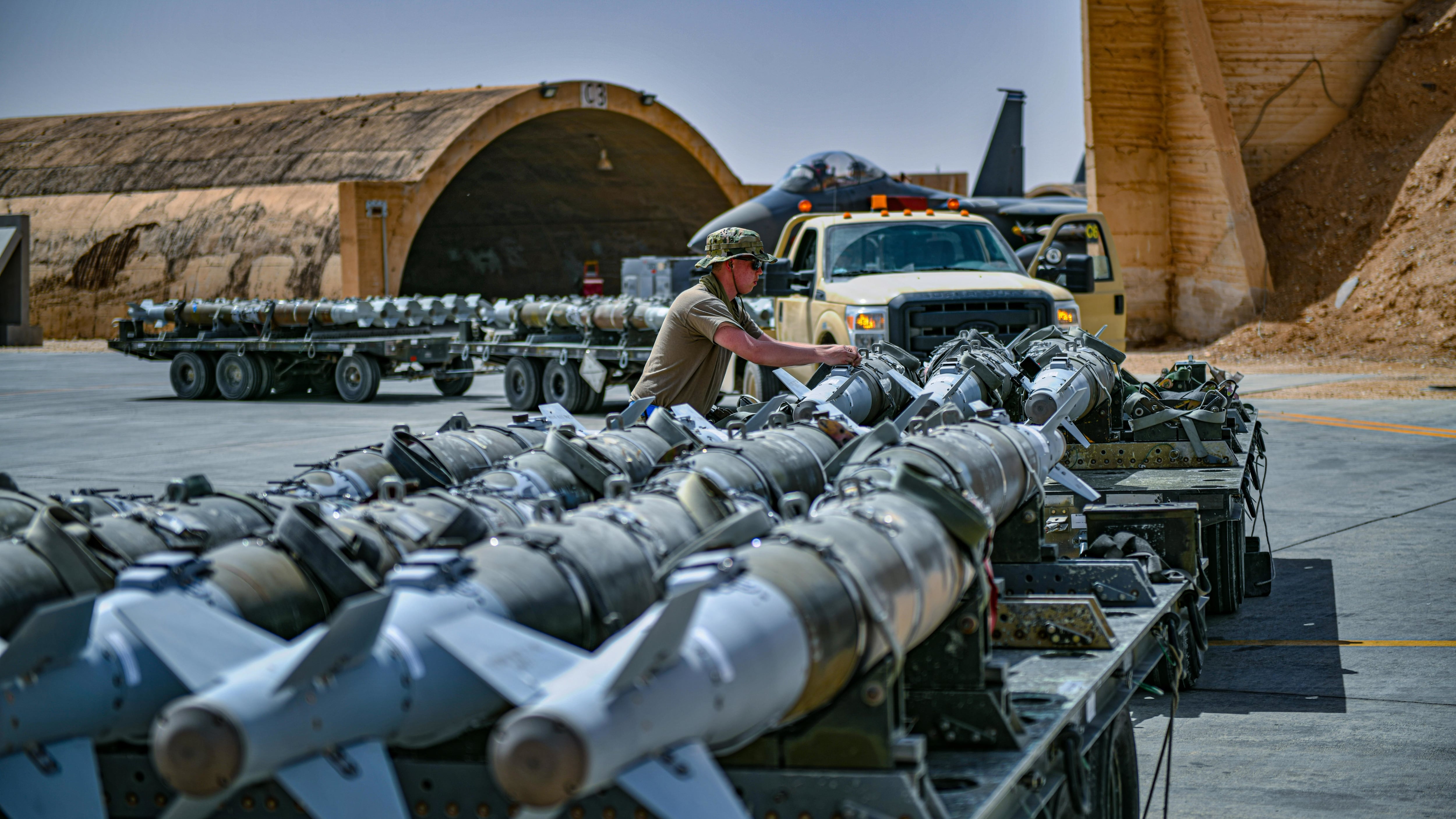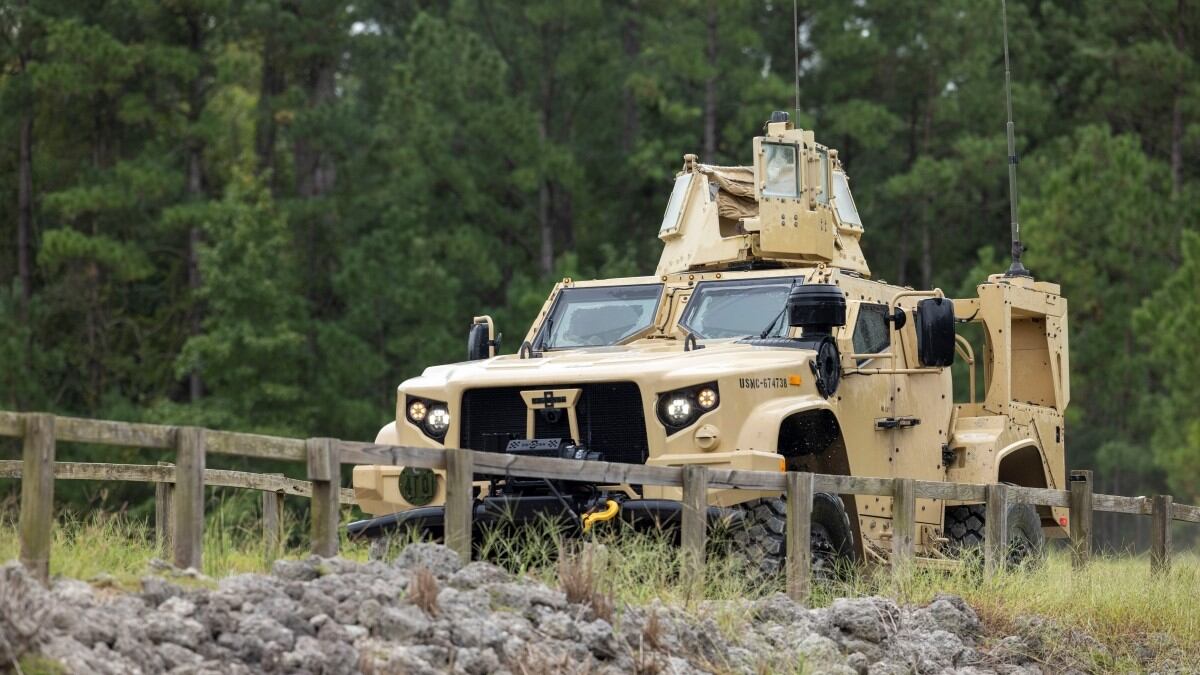WASHINGTON ― The Pentagon aims to rev up the munitions industrial base and max out production lines for several top priority missiles, according to the budget unveiled Monday.
With an eye on Russia and China, the Pentagon in fiscal 2024 would spend $30.6 billion for missiles and munitions ― 12% more than last year and 50% more than five years ago, when the U.S. was still fighting the Islamic State and Taliban.
The Pentagon budget would also break new ground by using multiyear procurement authorities generally reserved for ships and aircraft to buy munitions and expand production capacity over several years.
At Monday’s budget rollout, Deputy Defense Secretary Kathleen Hicks and Joint Chiefs Vice Chairman Adm. Christopher Grady did not answer directly whether the Pentagon, like the NATO alliance, is raising stockpile targets due to the war in Ukraine. The move was aimed at deterring China and ensuring the health of the U.S. defense industrial base, they said.
“This latest budget expands production capacity even more, and procures the maximum amount of munitions that are most relevant for deterring and, if necessary, prevailing over aggression in the Indo-Pacific,” said Hicks, adding that one-third of the munitions budget request is for long-range fires.
Pentagon Comptroller Mike McCord said the munitions request was “Ukraine informed, even if not Ukraine specific.” To replenish U.S. stockpiles depleted by the war in Ukraine, Pentagon officials said they will rely on supplemental appropriations from Congress, which granted the Pentagon $35.7 billion for FY23.
“These are not the kind of missiles that are key to the Ukraine fight, they are key to Indo-Pacific deterrence,” McCord said. “What [Hicks] has been pushing us to do is to think about lessons we’re learning today and apply them to future scenarios, think about what would I have done four years ago if I had a crystal ball, to think about things that might be coming.”
The Pentagon’s $170 billion procurement budget request ― touted as the largest ever ― would use a new “large lot procurement pilot” strategy to maximize production capacity for several munitions used across the services: Lockheed Martin’s Joint Air-to-Surface Standoff Missile Extended Range (JASSM-ER) and Long-Range Anti-Ship Missile (LRASM) ― and the Raytheon Technologies-made RIM-174 Standard Missile (SM-6), AIM-120 Advanced Medium Range Air-to-Air Missile (AAMRAM).
Though not in the pilot program, the Pentagon is also using multiyear contracting to buy roughly 103 Naval Strike Missiles at $250 million. The Marine Corps’ new, low-signature Marine Littoral Regiments and their Navy/Marine Corps Expeditionary Ship Interdiction System are slated for 90 of the ground-based missiles, which Raytheon manufactures.
Of the $30.6 billion for munitions, more than half ― $17.1 billion ― is for tactical missiles, while $7.3 billion is for strategic missiles, $5.6 billion for conventional ammunition and $600 million for technology development. The plans separately call for $15.1 billion more spread across the next five years to cover upfront costs for long-lead item procurements.
Another $1 billion would allow industry to procure long-lead items for the weapons, and otherwise “put that money up front to send the demand signal to our industry partners,” according to Maj. Gen. Michael Greiner, the Air Force’s deputy assistant secretary for budget.
To further spur defense firms to expand production capacity, defense officials said they will seek congressional approval for future multiyear buys of the Raytheon-made Patriot surface-to-air guided missile system and the Lockheed-made Guided Multiple Launch Rocket System, a surface-to-surface medium-range rocket fired from the M142 High Mobility Artillery Rocket System. The U.S. has given all three systems to Ukraine.
U.S. Army officials have said their 2024 budget will request authority to buy more munitions in bulk over multiple years as the U.S. and its allies work to refill their inventories and help Ukraine’s forces defend themselves.
“In these ramp-ups, the reason we’re taking a really maximalist foot on the floor all the way down approach is that we don’t know how long the conflict will last, we don’t know how low our stocks will be, we don’t know the full amount we will have to help replenish,” Assistant Secretary of the Army for Acquisition, Logistics and Technology Doug Bush said earlier this month.
RELATED

The Air Force budget proposal would double missile spending, from $2.3 billion in 2032 to $4.7 billion in 2024. “The munitions buys are focused on ... the targets that we would have to be concerned about in a China scenario of some kind,” Air Force Secretary Frank Kendall told reporters in a March 10 briefing at the Pentagon.
The Air Force would include $161 million to buy 48 Joint Strike Missiles, made by Norwegian firm Kongsberg Defence Aerospace and Raytheon, for the first time. A top Air Force budget official, Maj. Gen. Michael Greiner, said those long-range missiles, which can be fired from the F-35 against land and ship targets, will help bridge the gap as LRASM continues to come online.
A Center for Strategic and International Studies report last month found the U.S. defense-industrial base is unprepared for a notional battle with China over Taiwan, as it would run out of key long-range, precision-guided munitions in less than a week. The report spotlighted U.S. military aid to Ukraine and criticized bureaucratic hurdles for defense contracting and U.S. arms sales overseas.
Other highlights from the budget proposal include:
- $1.8 billion for 550 Joint Air-to-Surface Standoff Missile Extended Range, more than twice the $902 million Congress enacted for FY23.
- $1.2 billion for 830 AIM-120 Advanced Medium Range Air-to-Air Missiles, up from $740 million in FY23.
- $1 billion for 118 Long-Range Anti-Ship Missiles, up from $550 in FY23.
- $386 million for 1,165 Joint Air-to-Ground Muntions, up from $297 million in FY23.
- $447 million for 1,170 of the Raytheon-made Small Diameter Bomb II, down $555 million for FY23.
- $1.6 billion for 125 of the Navy’s RIM-174 Standard Missile, up from $799 million for FY23.
- $1 billion for 5,064 Guided Multiple Launch Rocket Systems, down from $1.3 billion in FY23.
- $934 million for 34 Raytheon-made Tactical Tomahawk Cruise missiles, down from $905 million.
- $206 million for 3,236 Boeing-made Joint Direct Attack Munitions, down from $328 million.
- $30 million for 40 Lockheed-made Hellfire missiles, down from $116 million.
Jen Judson and Megan Eckstein contributed to this report.
Joe Gould was the senior Pentagon reporter for Defense News, covering the intersection of national security policy, politics and the defense industry. He had previously served as Congress reporter.
Stephen Losey is the air warfare reporter for Defense News. He previously covered leadership and personnel issues at Air Force Times, and the Pentagon, special operations and air warfare at Military.com. He has traveled to the Middle East to cover U.S. Air Force operations.










